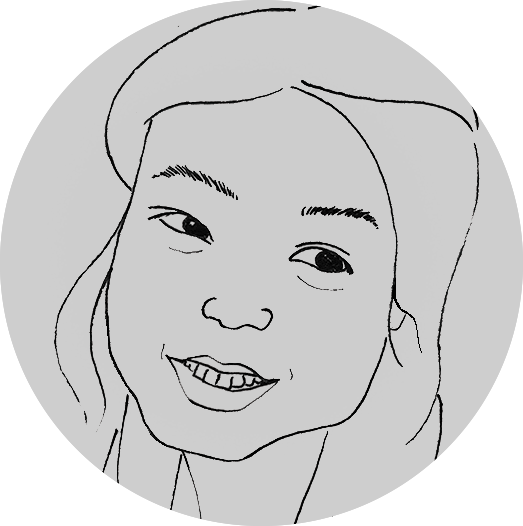[ad_1]
Today on social media, girls flaunt perfect lives: styled hair, trendy and fashionable outfits, picturesque backgrounds, flattering but casual poses. The snapshots curate a particular image of effortless beauty, but behind the scenes, even the most casual selfies take tens of tries and a full face of makeup. Posed photos are the result of a million pieces falling into place, making one photo the one that outdoes the others: the background, the pose, the outfit, the hair are each good enough. Aesthetic shots of cities and landscapes are carefully chosen to match a color scheme and curate the feed.
These posting rituals speak of long-held beauty standards, modeled by popular accounts and cascading down to the normal person and 16-year-old girl. If you’ve been wondering “why is everyone famous on social media so thin/attractive/white?”, you’re not alone. It’s widely speculated that the TikTok “For You” algorithm scores users by euro-centric standards of attractiveness, and Black influencers find it significantly harder than their white counterparts to secure brand deals and make income. The fact is algorithms boost well-performing content, absorbing an entire human history of white and thin people imposing standards on everyone else.
While beauty standards aren’t new, one might argue that social media promotes them in an especially harmful way. Research isn’t yet conclusive on how social media’s unique interactivity affects perceptions of beauty. Social media does contribute to negative body image; however, exposure to traditional media has a similar effect. Meanwhile, the nature of influential content is shifting from aspirational to relatable, as increasingly digestible media forms connect with audiences in more casual ways. Marketers know this, so marketing has moved from traditional advertisements towards influencer sponsorships. For example, Doja Cat made a Tiktok jingle about Mexican pizza for Taco Bell, and Duolingo is known for its “unhinged” social media persona.
The shift is noticeable. Gone are the aspirational bloggers of 2014, posting DSLR photography and expensive foreign destinations — my current feed is girls about my age, who look like me, holding photoshoots on city streets and parking garages. Instead of VS Pink models, my “celebrities” are influencers like Helen Peng, a girl who could basically be my classmate, except that she’s an incredible dancer with 1.8 million Tiktok followers.
Embedded in the rules accompanying this shift is a gendered expectation, always the message to girls: Try, but don’t try too hard. Look polished but relatable, model but not unnaturally, wear natural makeup but not full glam. Blur your photos so they look taken in the moment.
Instead of aspirational lives that only rich celebrities who evidently have very different circumstances can attain, we constantly view “relatable” content from people just slightly ahead of us. Productivity YouTubers are just like you, but they have a perfect system for studying and note-taking. Fashion bloggers tell you exactly which clothes they bought, so you can buy them and achieve the same look. The standards are subtle but demanding, asking why we can’t do it if they can.
In many ways, the beauty standards of relatability are more far-reaching than before. Instead of being limited to the sphere of physical appearance, an entire lifestyle is idealized and projected. In every aspect of life, there’s relatable content for you to aspire to: diet, outfits, travel, workouts, work, home decor, nights out, nights in, friend groups, even crying. So we strive, because we believe we can recreate these idealized scenes. They make it look easy.
What makes the standards more insidious is that they’re never spoken, only understood by a sea of girls finding their place in the digital age. Influencers often don’t take the stance of a brand selling you a product; they approach their audience as a friend giving an honest recommendation. It doesn’t feel like conforming to a beauty standard when an online persona you trust recommended you a new study system, or a different brand of hair product.
Young girls — the generation we say look like 23-year-olds when they’re only 16 — grew up looking at perfect pictures of others online, and they understand what the digital world asks of them, learning social rules analogous to the ones they pick up in school. Naturally, they learn. They don new haircuts, draw on freckles and eyebrows, learn to pose in photos (perhaps by watching a modeling tips video), get outfit inspiration from 25-year-old bloggers, and wear blazers to school. They become photographers and social media managers. It’s second nature because these are the rules of digital society.
This is the world my little sister will grow up in. Still, I won’t tell her to delete social media and recover some past innocence from before digital standards permeated our consciousness. These are the new rules, and if any girl enjoys engaging with lifestyles portrayed on social media, she deserves to try as hard as she wants without contempt. (No one is telling boys to stop hitting the gym every day in their pursuit of an ideal body type.) Obviously, take care of yourself first, and take whatever measures you need against social media’s many physical and mental negative effects. When your health is spoken for, then curate your Instagram feed if you want, go out with your friends and have a day-long photoshoot if you want.
The act of revolution is not necessarily ignoring standards entirely, rejecting the supposedly frivolous pursuit of beauty in the name of feminism. I think it’s finding a way to love yourself anyway — whether it involves makeup or fashion or fitness, or posting on Instagram, or not posting on Instagram. It’s coming to terms with who you are, both your physical and digital selves.
Elizabeth S. Ling ’23 is a Computer Science concentrator in Eliot House. Her column, “Alone Together,” appears on alternating Fridays.
[ad_2]
Source link
